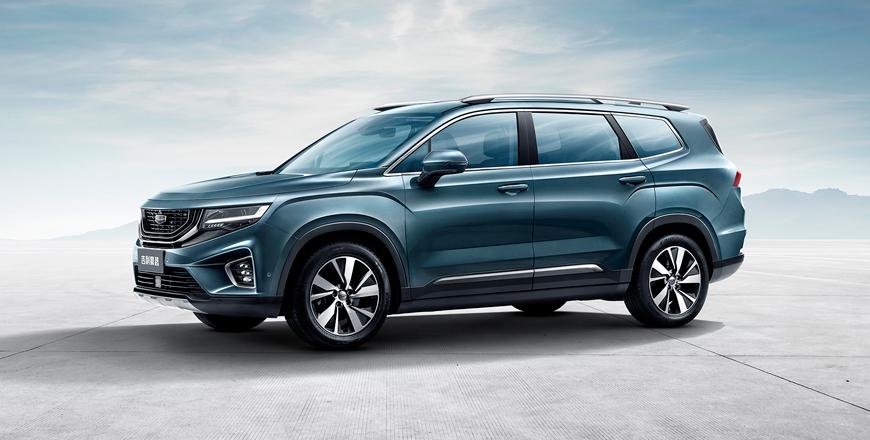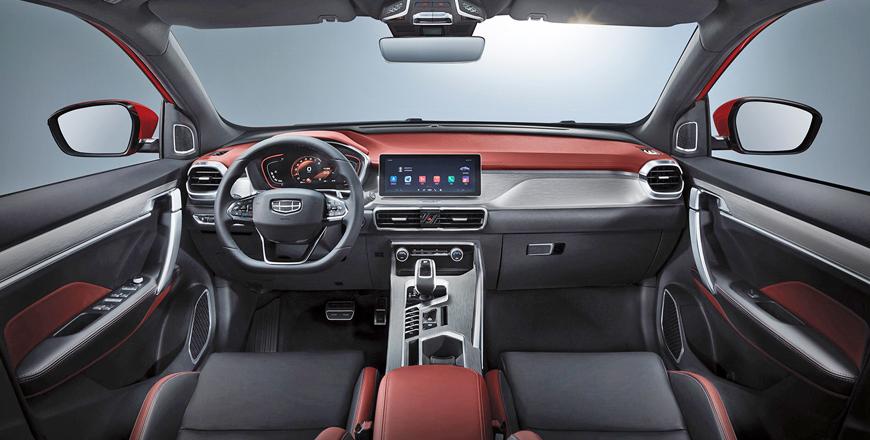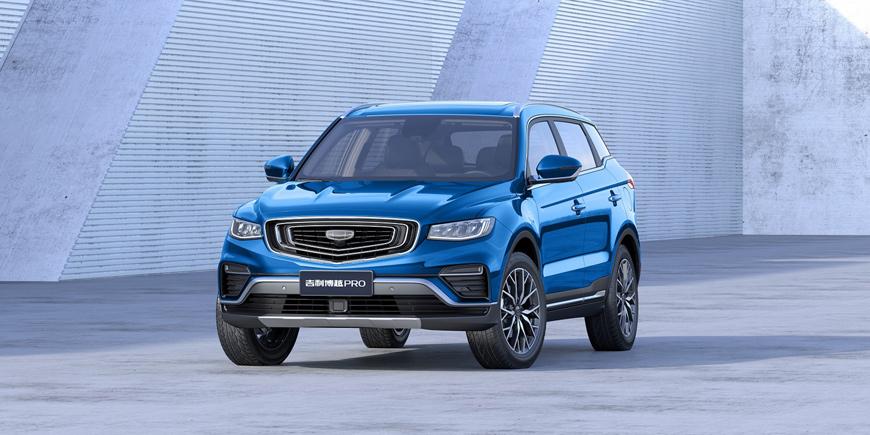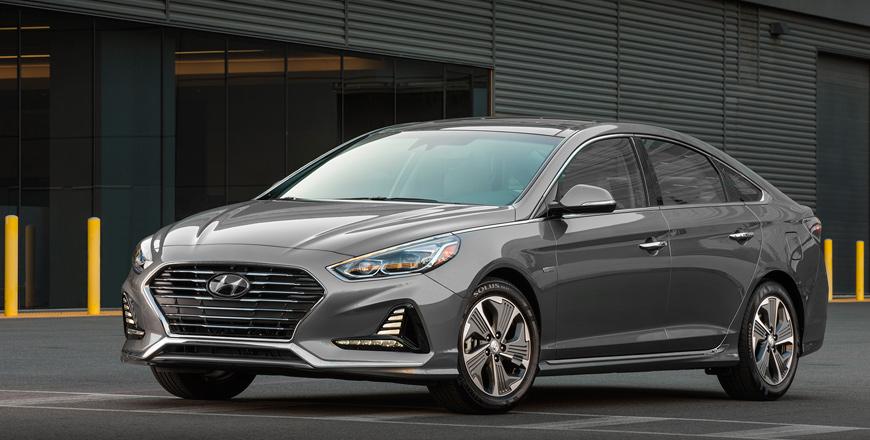You are here
Geely Okavango: Long haul hero
By Ghaith Madadha - Jan 31,2022 - Last updated at Jan 31,2022

Photos courtesy of Geely
A spacious seven-seat family newcomer to the Jordanian market since last month, the Geely Okavango was, however, first launched under the Haoyue nameplate in its Chinese home market back in 2020.
A comfortable crossover that is positioned in a more attainable price bracket, it was to be expected that the Okavango would be both a practical vehicle and refined ride during a recent and thorough test drive. However, it was the Okavango’s manoeuvrability, versatile performance and reassuring dynamics that proved to be above expectation.
Named after Botswana’s Okavango Delta region, Geely’s mid-size crossover may not quite be one for treacherous off-road expeditions, but is instead a ‘heroic’ three-row family vehicle, with three independently folding and sliding middle row seats. Ideal for long on-road touring with moderate dirt trail excursions, the Okavango’s sense of adventure is reflected in assertively moody yet classy styling elements such as slim, squinting and deeply recessed headlights, sculpted bumper, jutting and raised clamshell bonnet, faux lower skid plate and broad and charismatic ripple effect grille design.
An assertive package
Incorporating black lower cladding and slightly squared-off and prominent wheel-arches, the Okavango’s sophisticated but assertive design also incorporates restrained matte metallic accents, muscular rear haunches, slim expressive rear lights. It chiselled body meanwhile features prominent ridges, character lines and contrasting concave and convex surfacing. With a sense of momentum, its descending roofline and ascending waistline meanwhile seemingly converge towards its subtle tailgate spoiler. Visually well-concealing its bulk, the Okavango is generously spacious inside, and can accommodate up to 2,050-litres of cargo, with rear seat rows folded.
For the Jordanian market, the Okavango is powered by a turbocharged direct injection 1.5-litre 3-cylinder engine and mild hybrid system – jointly developed with Geely’s Swedish subsidiary, Volvo – driving the front wheels through a 7-speed automated dual clutch gearbox. Developing 174BHP at 5,500rpm and 188lb/ft throughout a broad 1,500-4,000rpm range, the Okavango’s prodigious three-pot engine is supplemented with a 48V mild hybrid starter/generator motor, which recovers kinetic braking energy and assists for improved output and longer fuel-saving automatic engine deactivation, to achieve low estimated 6.6l/100km combined consumption.

Confident and quiet
With the Okavango’s mild hybrid system pitching in often, its integration is notably smooth, with little, if any, hint of the lift-off delay often associated with full hybrid systems. Producing a maximum combined 187BHP and 221lb/ft, the Okavango is responsive from standstill, and with a quick-spooling turbo, is estimated to accelerate through 0-100km/h in around 10.5-seconds and onto 190km/h. Versatile in mid-range, the Okavango is confident over-taking and driving up steep inclines. Meanwhile, its electric boost provides an easily accessible reservoir of torque across the range.
Smooth and refined in operation, the Okavango’s well-insulated cabin remains quiet even at high revs, while its engine is at its best through its torque-rich mid-range. With three driving modes available, the Okavango’s 7-speed dual clutch gearbox takes on slightly different driving characteristics, with shifts executed most succinctly and responsively in Sport. Comfort mode is meanwhile smoothest and most intuitive, while Eco mode adopts a more efficient, but less responsive shifting profile. Sequential manual shifting via the gear lever is also possible for more driver control.
Consistent companion
Driven extensively in various conditions, the Okavango proved to be a comfortable and smooth long distance companion, dispatching highway stretches with reassuring composure, stability and refinement. Meanwhile, it was supple and forgiving over most road imperfections, lumps and bumps, but perhaps a slightly firmer suspension rate would have been welcome over some bigger, more sudden bumps. Nevertheless, the Okavango’s comfort level impressed, as did its manoeuvrability in town, with a tight 10.6-metre turning circle, light steering and clear 360° reversing camera compensating for its high waistline.
Dynamically more accomplished and more agile than its size and height suggest, the Okavango weaves through winding country roads and snaking hill climbs with confidence and less than expected body lean. Turning in tidily, its steering gives decent feel for the road and vehicle position. On wet or damp roads, the Okavango’s instinct is to understeer and torque-steer slightly if pushed too hard into a tight corner. Serving to remind the driver of dynamic limits, this is entirely predictable and easily corrected by easing back on the throttle.

Composed comfort
Easy to place on road and composed through successive direction changes, the Okavango delivers reassuringly excellent rear grip, and predictable and notably consistent dynamics, given the absence of an all-wheel-drive system to send power rearwards mid-corner. Electronic stability control is meanwhile smooth, effective and un-intrusive, while brakes are reassuring and consistent, if feeling slightly sensitive to input at first. Though not an off-roader, the Okavango nevertheless features hill descent control for when needed, and usefully generous 190mm ground clearance for dry dirt roads and deeply rutted roads.
Spacious inside for cargo and passengers, the Okavango’s front and middle row seats provide good head and legroom, and twin third row seats are reasonably accommodating, while large rear doors with wide swing angles offer excellent access. Stylish and contemporary in design, the Okavango’s cabin well incorporates hard and soft surfaces and textures, and features user-friendly layouts and controls and a comfortable, well-adjustable driving position. Well-equipped with convenience, infotainment and safety features, the addition of a blind spot warning system would, however, be welcome for busy Amman roads.
TECHNICAL SPECIFICATIONS
- Engine: 1.5-litre, transverse, turbocharged 3-cylinders
- Bore x stroke: 82 x 93.2mm
- Compression: 10.5:1
- Valve-train: 12-valve, DOHC
- Electric motor: 48V electric starter/generator
- Gearbox: 7-speed dual clutch automated, front-wheel-drive
- Power, BHP (PS) [kW]: 174 (176) [130] @5,500rpm
- Specific power: 117.8BHP/litre
- Torque, lb/ft (Nm): 188 (255) @1,500-4,000rpm
- Specific torque: 172.6Nm/litre
- Combined power, BHP (PS) [kW]: 187 (190) [140]
- Combined power-to-weight: 112.7BHP/tonne
- Combined torque, lb/ft (Nm): 221 (300)
- Combined torque-to-weight: 180.8Nm/tonne
- 0-100km/h: 10.5-seconds (estimate)
- Top speed: 190km/h
- Fuel consumption, combined: 6.6-litres/100km (estimate)
- Fuel capacity: 60-litres
- Length: 4,835mm
- Width: 1,900mm
- Height: 1,780mm
- Wheelbase: 2,815mm
- Tread, F/R: 1,603/1,618mm
- Overhang, F/R: 985/1,035mm
- Ground clearance: 190mm
- Luggage volume, maximum: 2,050-litres
- Kerb weight: 1,659kg
- Suspension, F/R: MacPherson struts/multi-link
- Steering: Electric-assisted rack & pinion
- Turning circle: 10.6-metres
- Brakes, F/R: Ventilated discs/discs
- Tyres: 225/55R18
- Price, on-the-road, with insurance: JD29,900-31,900
- Warranty: 6-years/200,000km, and 2-years service package
Related Articles
Effectively if not officially re-launched under a new official importer in recent months, Geely’s compact Coolray was unveiled last week in
A recent arrival to the Jordanian market, coinciding in a change of official local importer, the Geely Azkarra made quite the impression dur
By Ghaith Madadha Among Jordan’s most popular mid-size saloons, the Hyundai Sonata Hybrid is a comfortable, smooth and refined cruiser


















